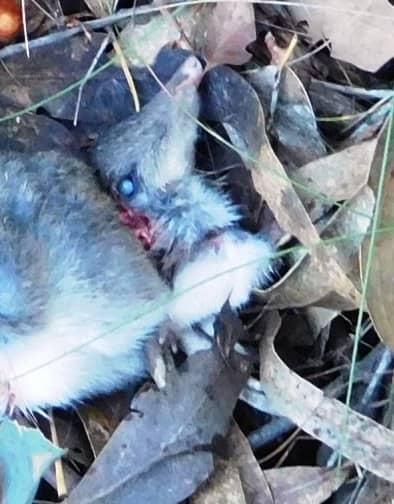I guess you realise I have been haunting this wonderful valley for decades, but now that I am over half way though my eighth decade I suppose I will be doing such big tough trips less than I used to. However I was up there for a few days a couple of weeks ago. I did not venture quite so high up as I used to do though, mainly because I had a bad cold.
The first night I camped in the Deer Hunter’s Tent below Mt Darling Creek.
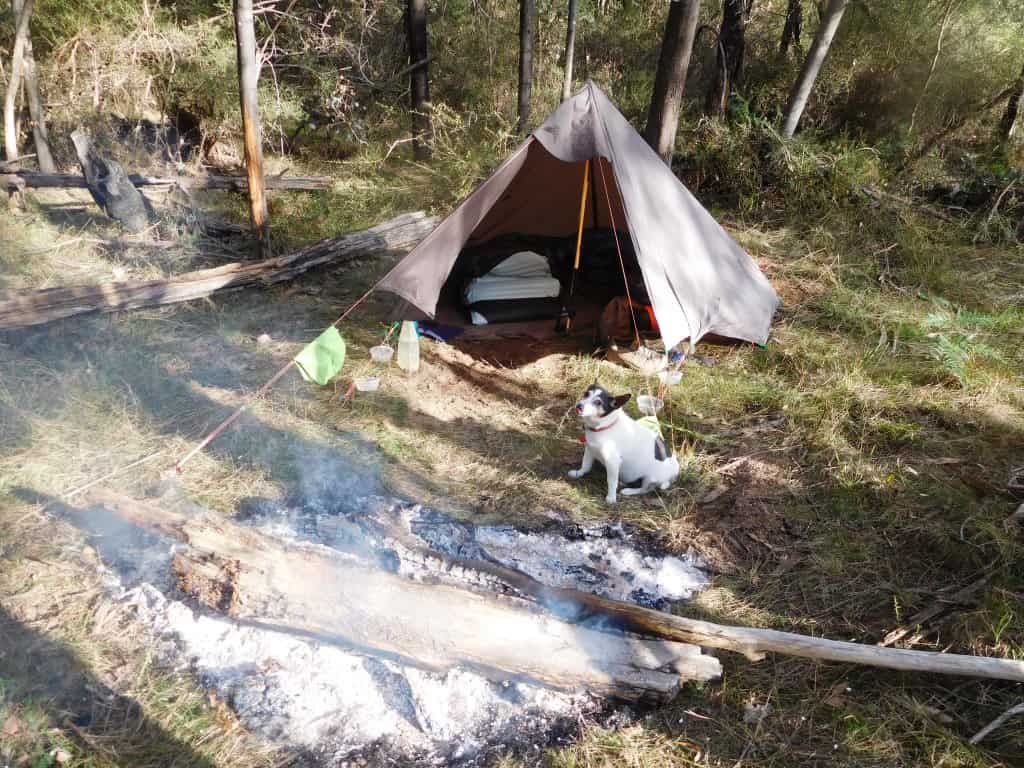
When I had the Pack Track well cleared (for many years) I could walk from Hernes Spur to (my car) at the Moroka Junction in a day and still drive the five hours home.
Often I used to travel up above Conglomerate Creek when I went in there for a week or more, but I doubt I will venture much above Hernes Spur (on foot at least) any more.
On the Wonnangatta Pack Track above Mt Darling Creek.
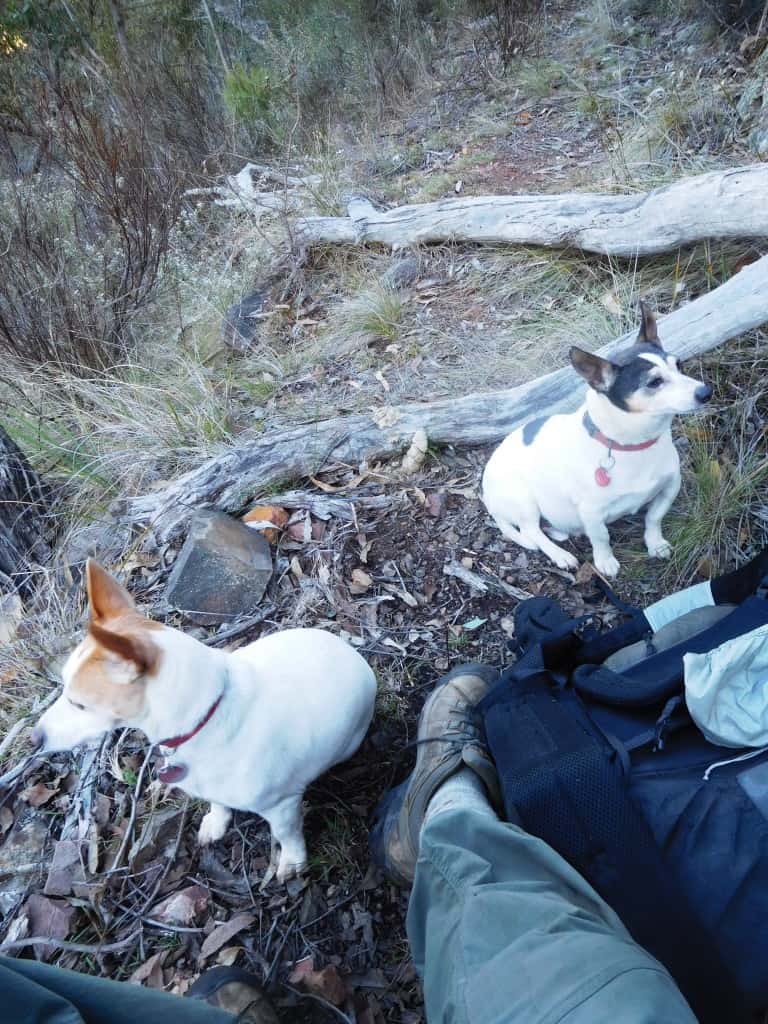
I find the section between the Hernes Spur and the Moroka – as well as the Moroka itself – quite engaging enough for me, but I am also still exploring other destinations.
I have at least two other favourite spots which are seldom/never visited by others (my preference) and I have recently been drawn to explore some other places (eg) the ruins of the old C19th gold towns on the upper Dargo River (Louisville, Brocket, Verdon), though getting in and out of (and traversing) that remote steep trackless valley will not be easy for these aged bones. See these pictures.
Partly I have been along the Wonnangatta less the last few years due to age (and indifferent health lately too) but also no-one else has been maintaining the track – and it has become quite chore for me too. I did some (modest) track clearing when I was there this time but it really needs a couple of young blokes with Fiskars’ machetes to really get it into good condition again – but it will be worth it. I used to toss the rocks and logs (tripping hazards) off it too which makes walking (quietly) much more pleasant.
A beautiful warm fire out front of the tent on the second night.
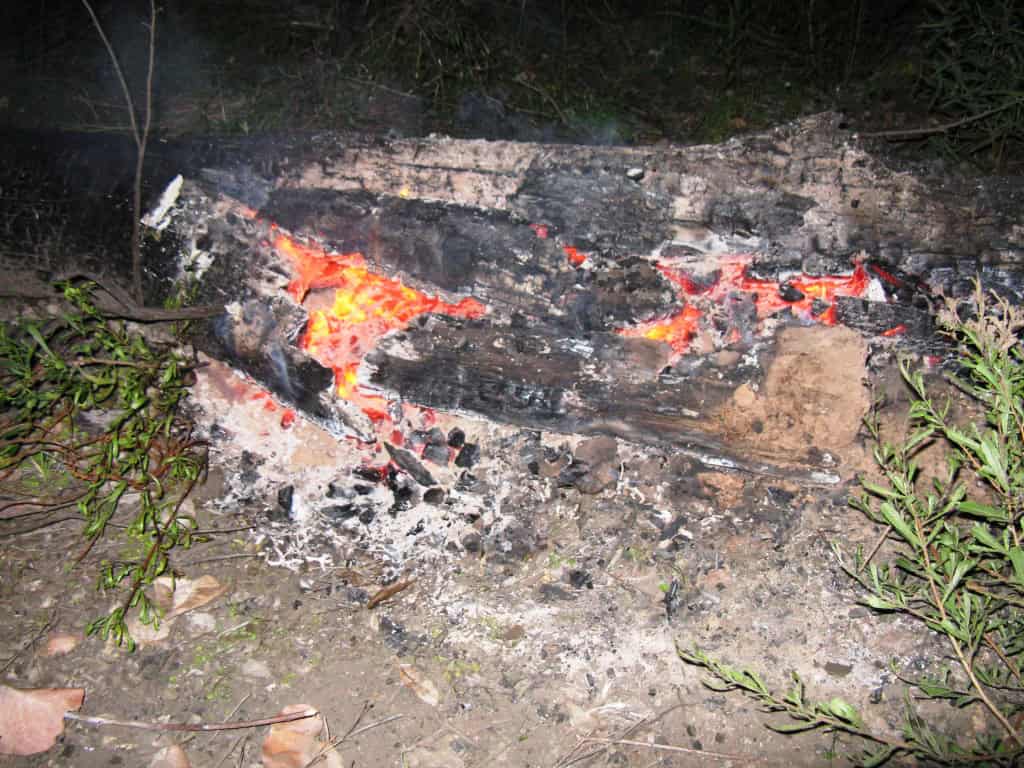
I used to have nearly a dozen camps (about an hour apart) along the river which I visited at random depending just on how much distance I made on any day. I also had a number of canoe drums ‘planted’ under logs along the way.
Each contained a tarp, pair of Crocs, billy, firelighters etc and a few also contained an Intex raft and paddle. Some of these have disappeared in the too-frequent bushfires which are a result of Parks’ mismanagement.
I always experience a pang when I pass a riverbank where I bagged a fine stag many years ago.
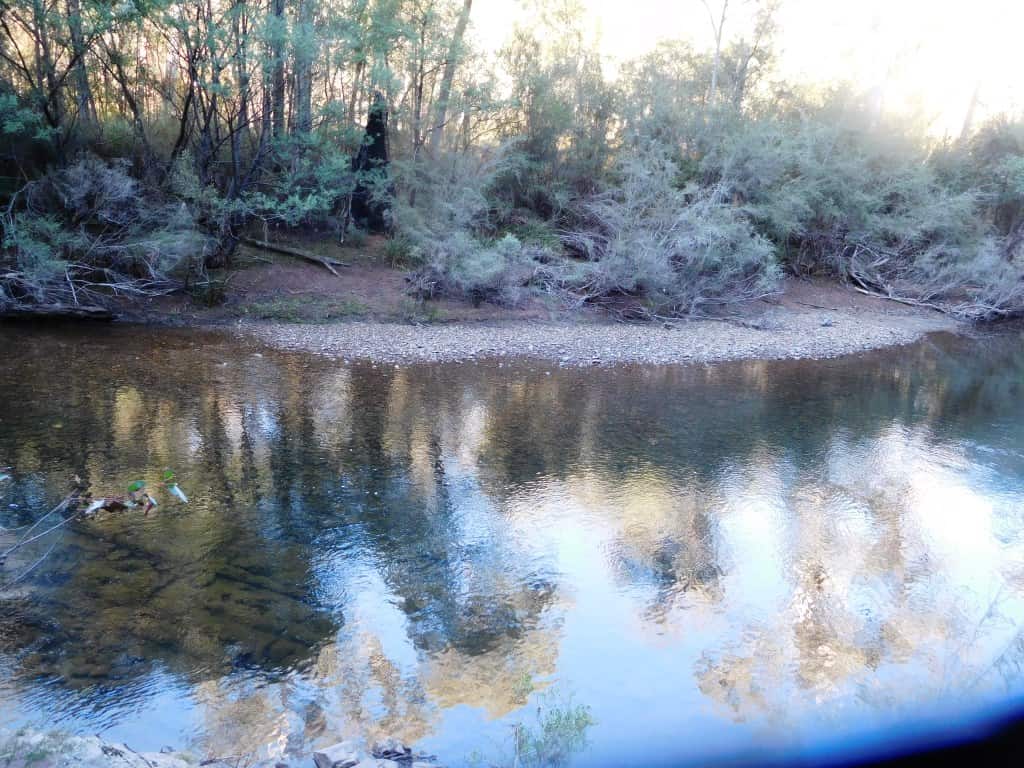
There he is still:
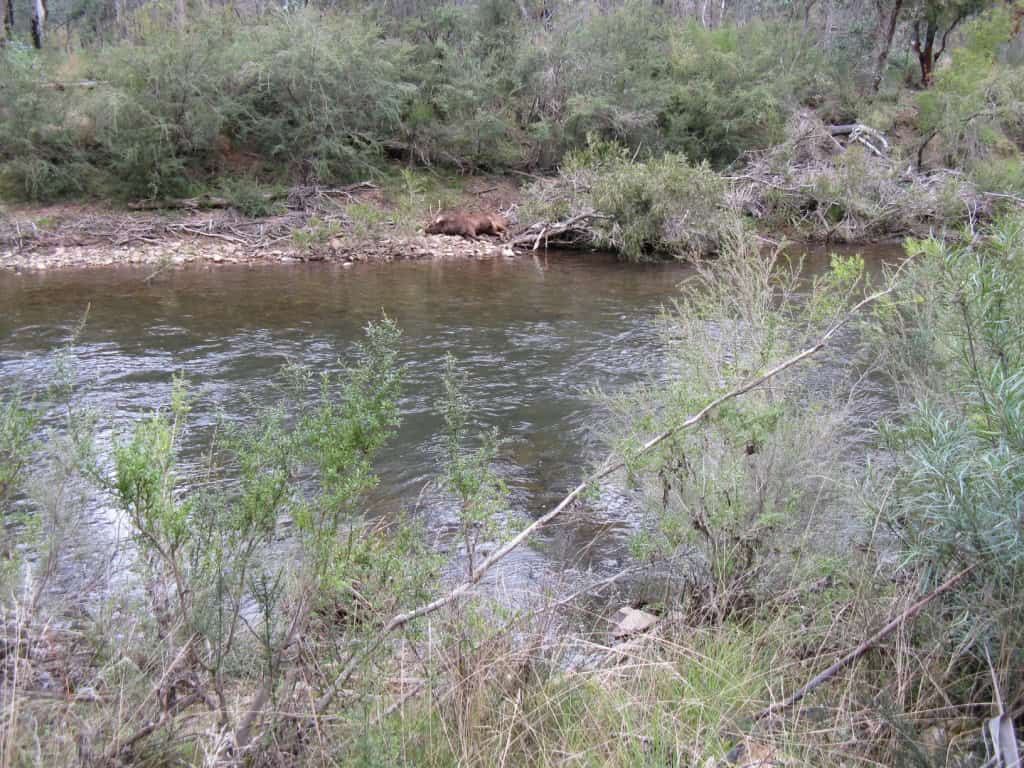
And there:
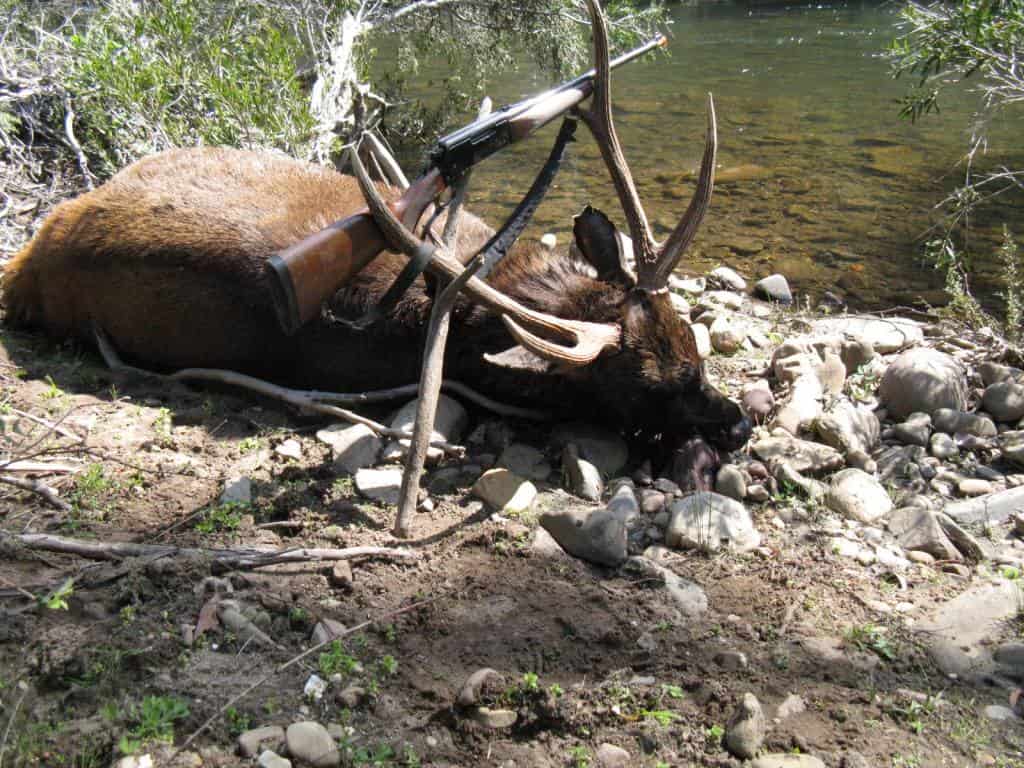
The mouth of the Mt Darling Creek had silted up so much I did not have to get my feet wet crossing it.
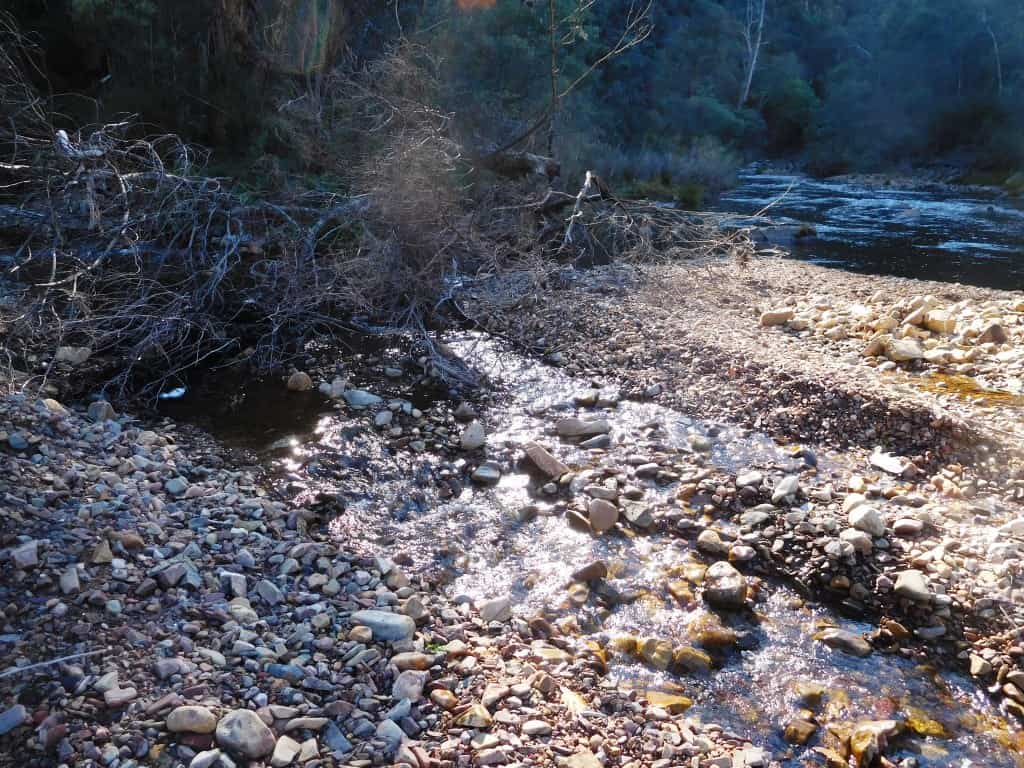
View downstream at Mt Darling Creek.
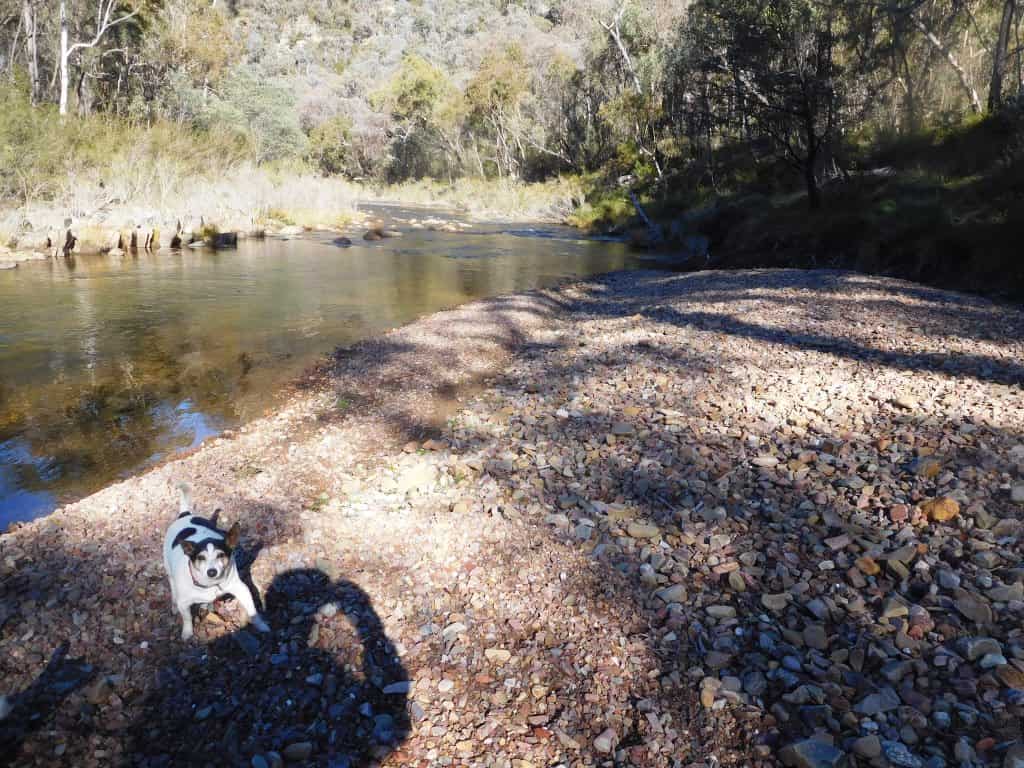
Just below Mt Darling Creek there was enough flood/firewood debris for many winter fires.
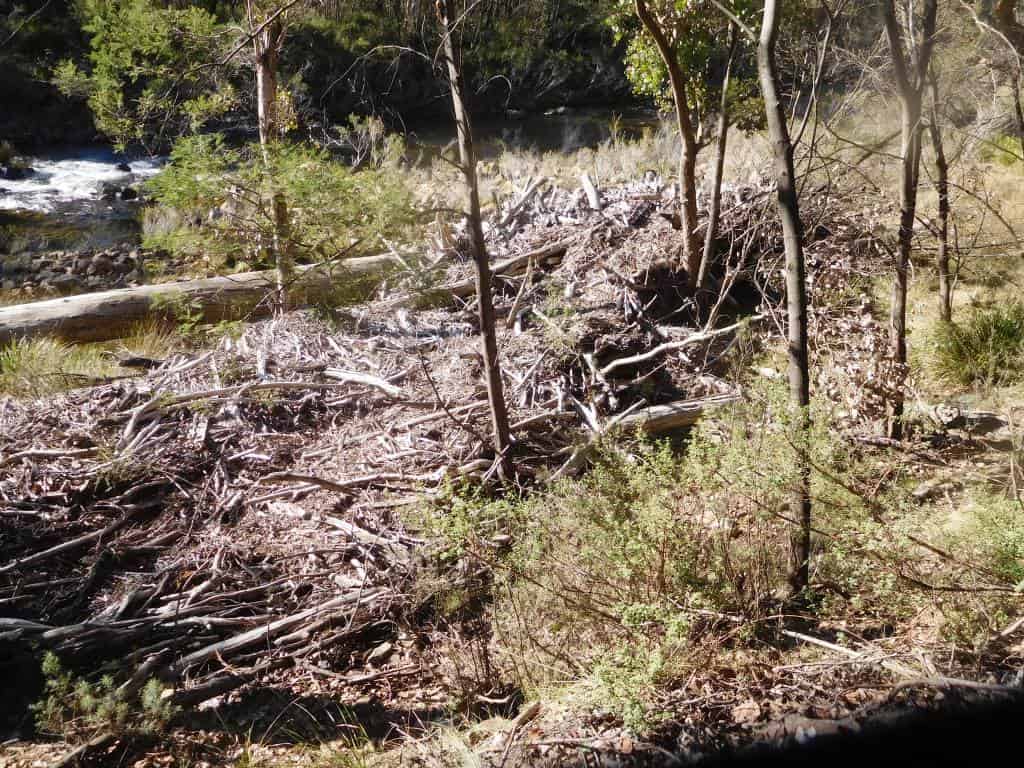
When I first ventured in there many years ago the deer were virtually as common as rabbits, but every living thing was pretty much erased by dreadful inflammatory events. They are beginning to recover somewhat from the devastating fires so that the hunting opportunities there are improving again.
I do plan a long trip up the Mt Darling Creek again. I have been up it a couple of kilometres again recently.
I did not return with any trophy this time – mostly as I did not take my .308 with me – too heavy with the cold I had.
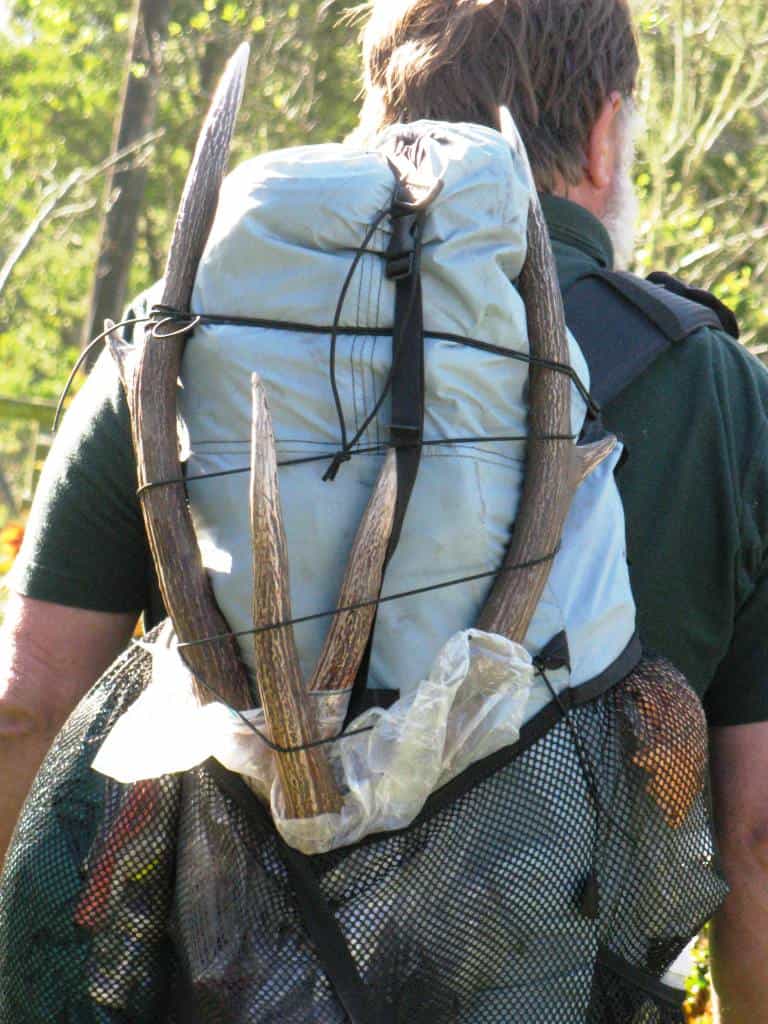
In any case, there are tasty trout in the river and many good spots to have a quiet camp along the way and just to commune with nature.The only ‘problem’ I have with more people visiting is that they tend to burn my firewood caches which I leave (to dry) against a log until I return.
Partly this is bad manners, (in not replacing what they have used) but it also occurs because people exhaust the resource which is nearby to ‘ideal’ camping spots. More people should camp on the true left bank. Perhaps I will…I used to have a raft (or two) planted in a drum with which I could readily access that bank. It is relatively easy enough to travel (it) all the way up from (roughly) Mt Darling Creek.
In other posts (DIY Pack Raft etc) I have described how to strengthen such a raft so it will handle Grade 3 rapids and how to make a double paddle for it (The Intex Double Paddle). From the Hernes Spur (when the river is running well) you can get back to the Moroka with a pack full of meat in 2-3 hours.
I am also (still) thinking of sort of ‘clearing’ or at least proving a loop up the ridge from the Mt Darling Creek confluence up to Mt Darling itself and back down the Diamantina Spur. I know there is a good camp with water from the Mount Creek on the snow grass clearing at the top of that spur as I have camped there .
I am hoping that the green patch I can see (on the east side) at the head of Mt Darling Creek) in a ‘Billabong’ saddle is a soak (which often occur in such places). If it is it might not be too hard to ‘develop’ it and thus have a further comfortable camp there.
I doubt that the morning and evening chorus will return (as it was) in less than another 20-30 years, if ever – but I am astonished at what (wildlife) has returned. There are now quite a lot of birds of many species actually along the river again, as well as other native critters, such as possums.
I admit I was astonished to find the freshly-killed body of a bandicoot on the pack track just above Mt Darling Creek on my most recent trip. Over the last few years I have been seeing ‘signs’ of them in various places though I confess I haven’t sighted a live one since the 1950s when they were common until the myxomatosis ‘plague’ so reduced the rabbit population that predators ‘took care’ of most everything else.
A bandicoot killed by a predator.
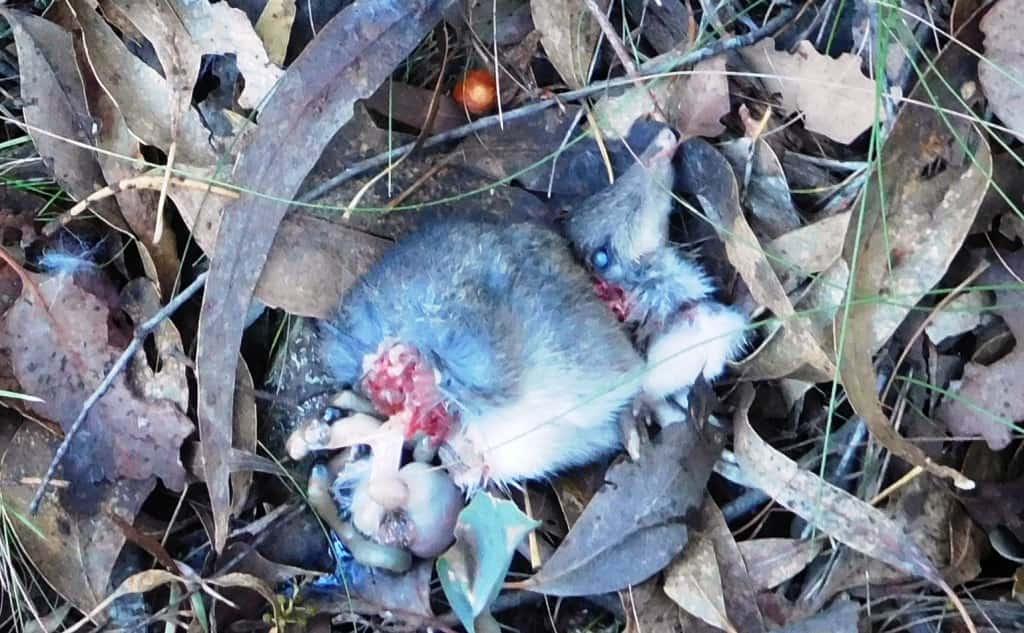
Shortly afterwards a young dead deer without a mark on it – a mystery.
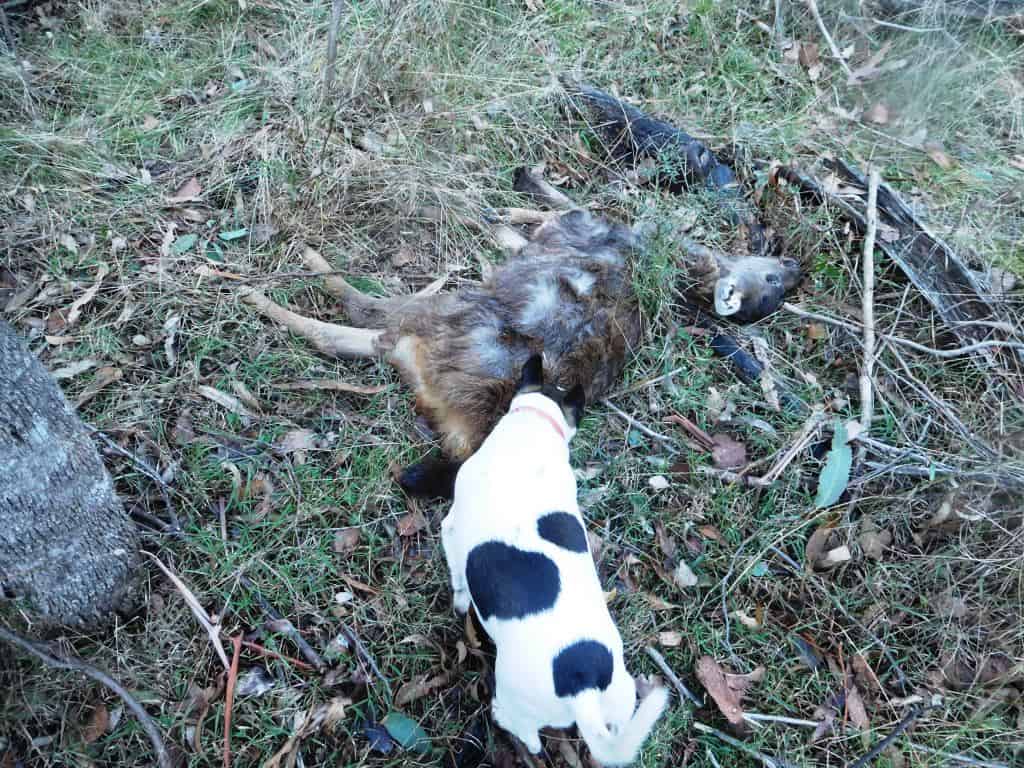
On a recent trip to Mt Feathertop a fellow hiker told me of a valley she knows along the Snowy which has a population ‘tiger quolls’. I had thought these were extinct, maybe even ‘imaginary’ nowadays – though I shot one in the hen-house around 1956.
I suspect there is more wildlife out there than we know. There is still quite a lot of remote wilderness in the Victorian mountains.
See Also:

